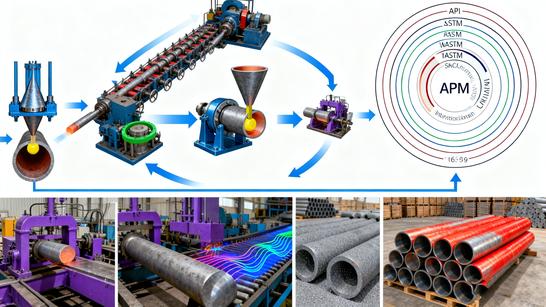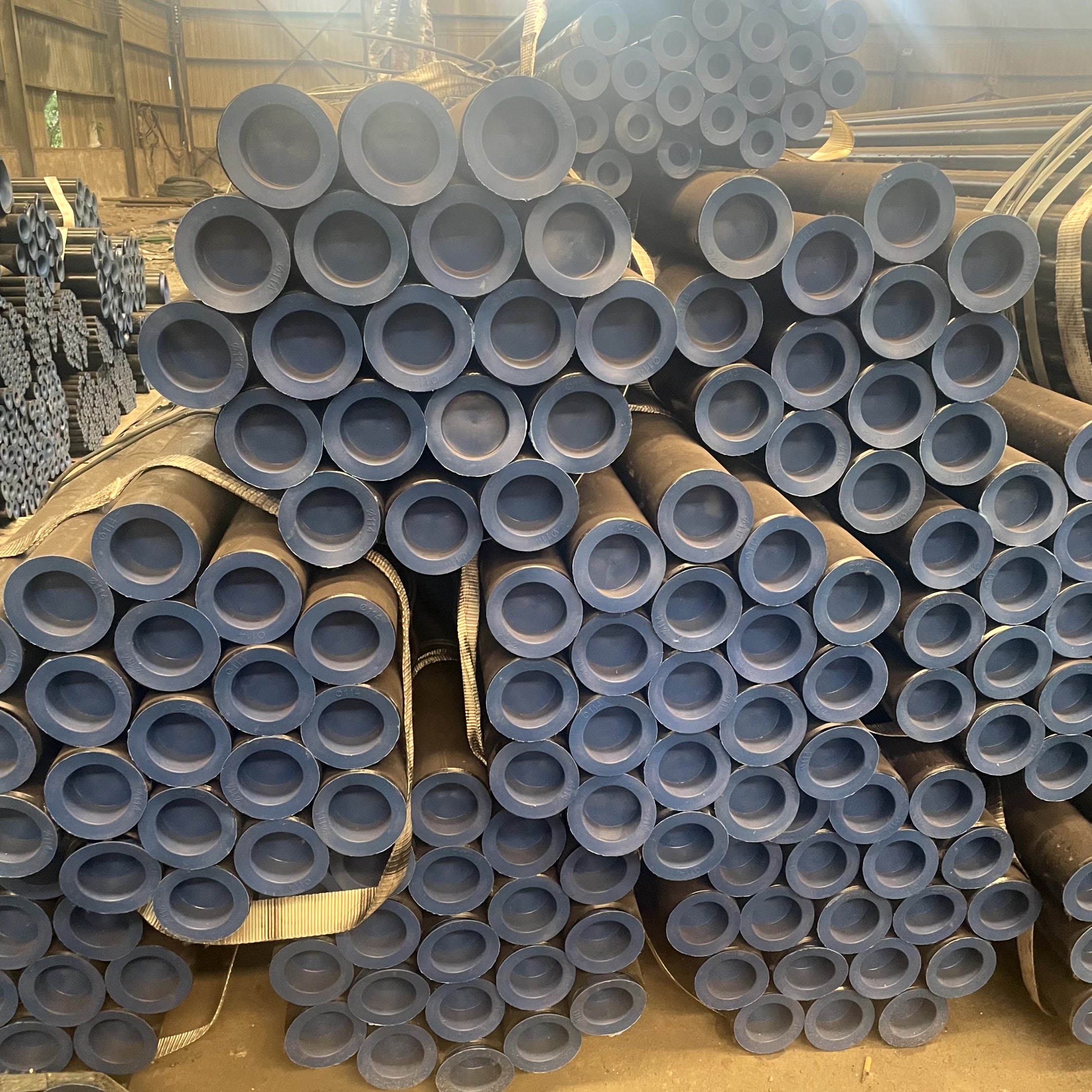The manufacturing of seamless steel pipes does not conclude when rolling or cold drawing is complete. During the complex seamless pipe manufacturing process, hot and cold working inevitably introduce internal stress imbalances and coarse grain structures, directly compromising the steel’s mechanical properties and overall reliability.
Therefore, Heat Treatment is the crucial final step that ensures the quality of seamless steel pipe. It precisely controls the heating and cooling processes to optimize the pipe's internal microstructure, enabling it to meet the stringent strength, toughness, and hardness requirements of standards like ASTM and API.
This article provides an in-depth look at the three most critical heat treatment seamless pipe processes: annealing, normalizing, and quenching, and their fundamental effects on the pipe's performance.
1. Core Objectives of Heat Treatment
The primary reasons for applying heat treatment to seamless steel pipe include:
-
Stress Relief: Residual stresses generated during rolling and cold drawing, if not removed, can lead to deformation or brittle fracture during service.
-
Improve Mechanical Properties: Adjusting key properties like strength, hardness, plasticity, and toughness to meet specific application demands (e.g., high temperature, high pressure).
-
Grain Refinement: Optimizing the steel’s microstructure to enhance both strength and toughness.
-
Homogenization: Eliminating chemical segregation, especially in continuous cast billets.
2. Analysis of the Three Core Heat Treatment Processes
Different methods of heat treatment achieve varying effects by changing the heating temperature, holding time, and cooling rate, thereby altering the pipe's internal structure.
2.1. Annealing — For Maximum Softness and Stress Removal
-
Process Description: The seamless steel pipe is slowly heated to a temperature above or below the critical temperature ($A_{c3}$ or $A_{c1}$), held for a sufficient time, and then slowly cooled to room temperature inside the furnace.
-
Microstructural Effect: Allows the steel's internal structure to revert to an equilibrium state, typically resulting in uniform, coarser grains.
-
Performance Impact: Significantly reduces hardness, increases plasticity and toughness, and completely eliminates internal stress. This is vital for cold drawn tubes intended for deep subsequent processing (e.g., bending, flaring).
-
Typical Applications: Used for materials requiring high plasticity or ease of cold working, and for complete removal of cold work hardening.
2.2. Normalizing — For Structural Optimization and Strength Improvement
-
Process Description: The seamless steel pipe is heated to the austenitic region (above $A_{c3}$ or $A_{ccm}$), held, and then cooled in still air. The cooling rate is faster than annealing but slower than quenching.
-
Microstructural Effect: Results in a finer, more uniform ferrite and pearlite structure (the normalized structure).
-
Performance Impact: Increases the material's strength and hardness while maintaining good toughness. Normalizing can eliminate the coarse structure and is often used as the final heat treatment seamless pipe step for some low- to medium-carbon steel grades.
-
Typical Applications: Widely applied to low- to medium-carbon steel pipes conforming to API 5L, ASTM A106, used in structural components and general pressure piping.
2.3. Quenching — For High Hardness and Strength
-
Process Description: The seamless steel pipe is heated above the critical temperature ($A_{c3}$ or $A_{c1}$), held, and then rapidly cooled in a medium such as water or oil.
-
Microstructural Effect: The steel undergoes martensitic phase transformation, forming a non-equilibrium martensite structure.
-
Performance Impact: Drastically increases hardness and strength but significantly reduces toughness and introduces immense internal stresses, making the steel very brittle.
-
Typical Applications: Quenching is rarely used alone as a final heat treatment. It is typically followed by Tempering (the combination is known as Quenching and Tempering) to produce high-performance alloy steel pipes, such as those used for specialized drill collars or high-strength mechanical structures.
3. The Link Between Heat Treatment and Pipe Selection
Heat treatment is essential for meeting specific pipe standards:
-
API 5L PSL2 Standard: Higher strength grade line pipes (e.g., X60 and above) may require normalizing or quenching and tempering to ensure yield strength, tensile strength, and low-temperature impact toughness meet the stringent PSL2 requirements.
-
Cold Drawn Tubes: Almost all cold drawn tubes require annealing or normalizing to eliminate stresses accumulated during the drawing process, preventing cracking in service and restoring material ductility.
Through precise control of the heat treatment seamless pipe processes, Hebei Cangtie ensures the optimal internal structure of every seamless steel pipe, providing stable, safe, and reliable products that meet the demanding material requirements of the oil, gas, and power industries.
Return to the Seamless Steel Pipe Master Guide to explore further on pipe performance standards and global applications.





